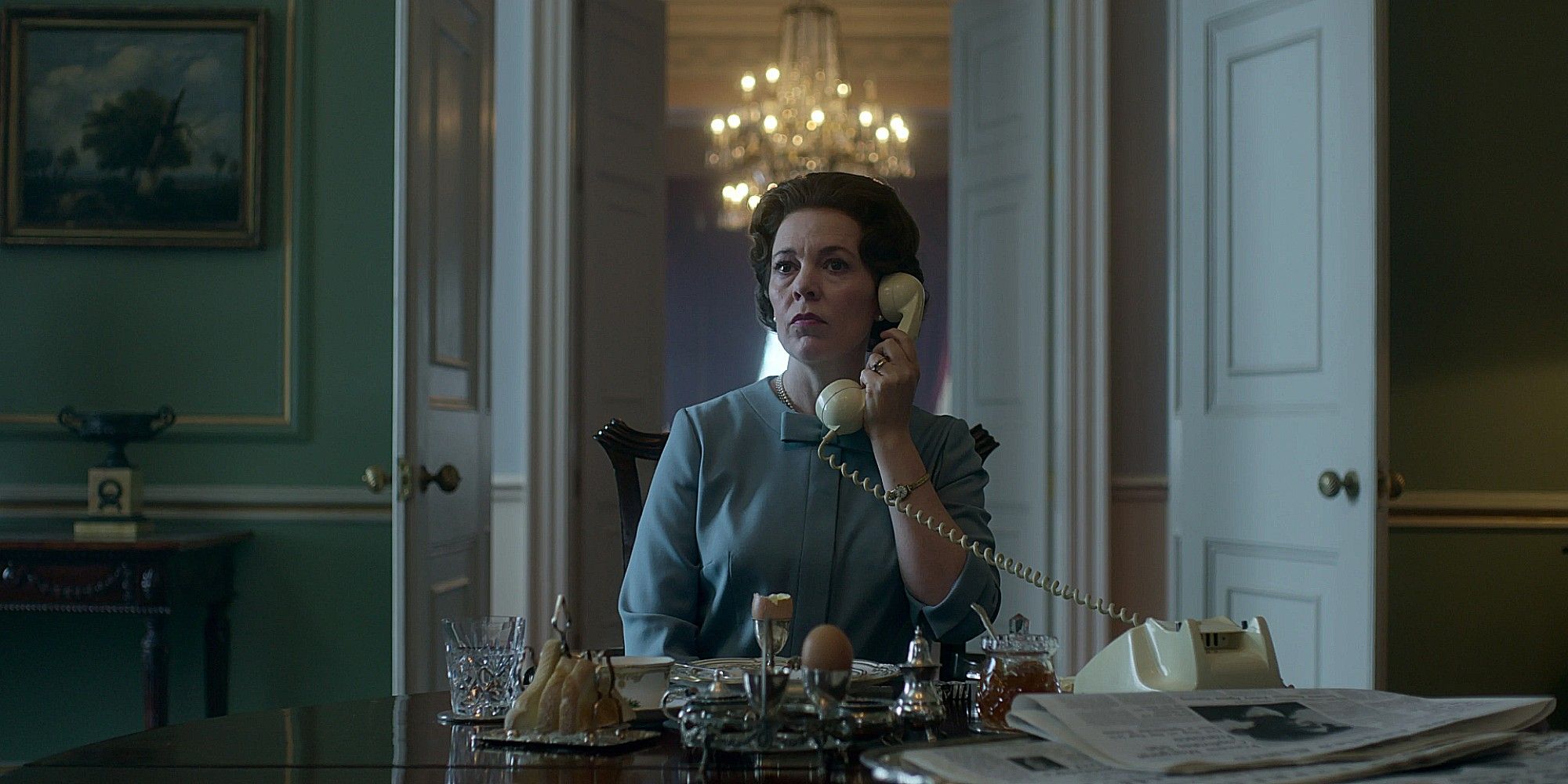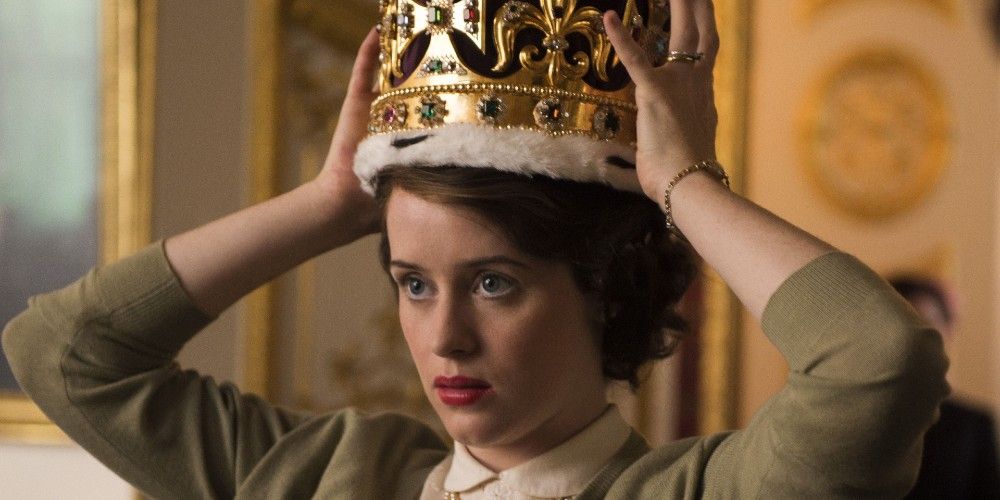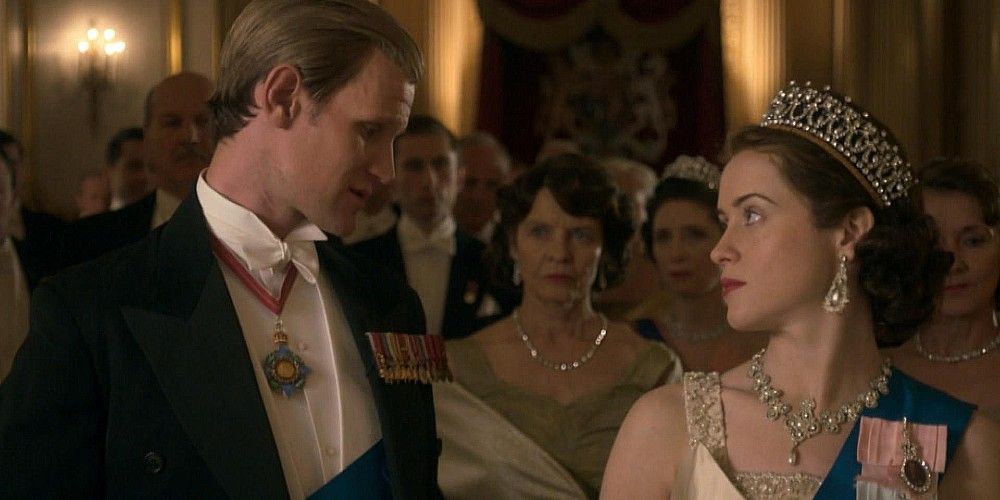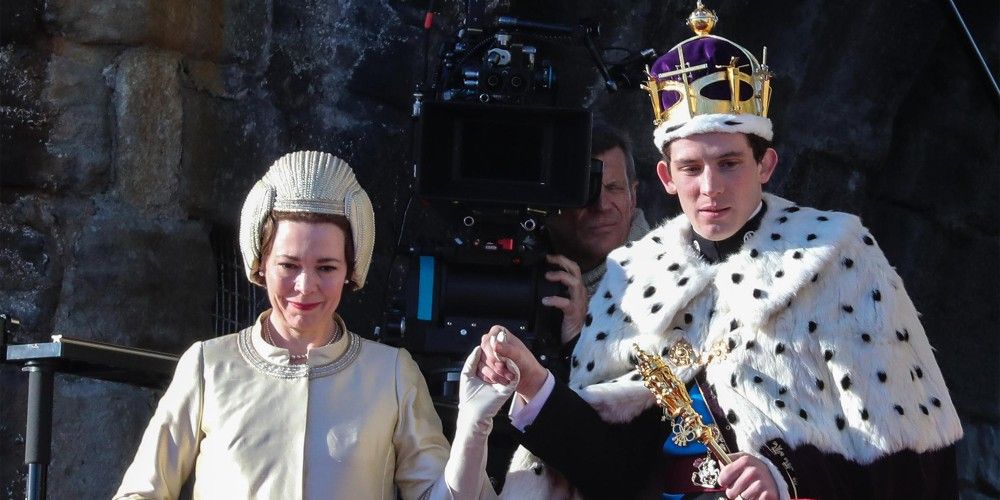A key moment in The Crown – Netflix’s premier biographical dramatization of the modern British Monarchy – is when the newly anointed Queen Elizabeth II (Claire Foy, then Olivia Colman) is advised by her grandmother Queen Mary (Eileen Akins) about her new position. “To be impartial is not natural, not human”, she tells Elizabeth, but Elizabeth is no longer ‘human’. Instead she is a “divinely-appointed” sovereign, a unifying apolitical figurehead for the country, meant to neutrally inspire the public rather than impose her own opinion.
The Crown follows Elizabeth’s reign throughout the 20th century, witnessing both major historical events (like the death-rattle of the British Empire through the 1956 Suez Canal Crisis) and the gossipy internal affairs of the Royal Family (like Elizabeth’s strained marriage to Prince Phillip (Matt Smith, then Tobias Menzies), or the forbidden love-life of her sister Princess Margaret (Vanessa Kirby, then Helena Bonham Carter)). All the while, Queen Elizabeth, nominally one of the most powerful women in the world, is not permitted to act as herself.
This is the through-line of The Crown, how the public roles of this Royal Family restrain and coerce them despite their obvious luxury. The show examines these ancient regimented customs, and how they continue to function into modern history. But the series also works as an anecdotal look at wider British social history, showcasing the interesting tidbits between the more famous moments. Everyone knows of wartime Winston Churchill (John Lithgow), but few know about his post-war tenure as Prime Minister. Likewise, The Crown covers events like the Great Smog of London or the 1966 Aberfan landslide, history not ‘big’ enough to be in textbooks but interesting all the same. Plus, The Crown does not shy away from the scandals associated with the Monarchy, like the Profumo Affair of the Marburg Files, the latter of which implicate the Duke of Windsor (Alex Jennings, then Derek Jacobi) as having Nazi sympathies.
The Crown is not anti-monarchy, but it’s not exactly pro-monarchy either. Rather, it has respect and sympathy for those individuals trapped within these inherited institutions, forced to operate within traditions that become increasingly arcane in a changing world. Episodes touch upon how Elizabeth never received any formal education (as it was deemed irrelevant for a monarch), or how Buckingham Palace is a dusty and miserable place to actually live but the Royals must do so for its symbolic value. Season 2, Episode 5, “Marionettes”, has Lord Altrincham (John Heffernan) suggest reforms like televising the Christmas Speech and hosting Garden Parties for the common people. They are important steps towards modernizing and familiarizing the Monarchy, but it also further demonstrates that the Royals are symbols first, and people a distant second.
Show creator Peter Morgan has an evident fascination with both modern politics (having written Frost/Nixon) and the Royal Family (having written 2006’s The Queen, about Queen Elizabeth II’s (here Helen Mirren) response to the death of Princess Diana, and the 2013 play The Audience, about the weekly meetings between the Queen and Britain’s Prime Ministers). Morgan is clearly entranced by the pageantry of the Monarchy, delighting in the formal regulations that conduct their lives, but also recognizes it can be a gilded cage. The Crown is shot with lavish cinematography and high production-values, emphasizing how handsome and ornate such history can be, and also how stifling.
This is also helped by the performances, which add vitality to these historical figures. Occasionally it can dip into caricatures, but then again, these upper-class aristocrats are basically already caricatures. Their highly-specific “received pronunciation” accents can be silly, as are their ignorant attitudes, but this is all the result of their sheltered upbringing. The Crown can be quite fun as a gossipy soap-opera, especially with its broad period-piece charms, but it usually gets grounded by the vulnerability and pathos of its leads, especially by Claire Foy in the early seasons and Josh O’Connor in the later ones.
If The Crown is about how the behind-the-scenes Royal history was deliberately kept behind-the-scenes to promote the notion of stiff-upper-lip stability, it also shows how such intergenerational repression keeps repeating itself. Seasons 1 and 2 focused primarily on how Elizabeth had to resign her individuality to ‘effectively’ reign. Now Seasons 3 and 4 focus on her children, and especially how Prince Charles’ (Josh O’Connor) obligation to being next-in-line means he cannot marry his ‘true love’ Camilla Parker Bowles (Emerald Fennel). Season 3, Episode 6, “Tywysog Cymru” even has Elizabeth reprimanding Charles’ desire to be his own person with the exact same speech Queen Mary gave to her all those years ago.
Britain in Season 4 of The Crown, which spans 1978-1990, is very different to Season 1, which spanned 1947-1954. While Prince Phillip’s idea of televising Elizabeth’s coronation was then a radical suggestion, now TV is constantly present. And while Britain was then still clinging to its commonwealth colonies, now even Ireland is slipping away due to the IRA. But the more things change they more they stay the same. Just as The Crown began with a woman entering into a male-dominated world, now Margaret Thatcher (Gillian Anderson) has become Prime Minister. And just as arranged marriages have stifled most relationships that entered the Royal Family, now Princess Diana (Emma Collins) has joined, and is subjected to the same intense scrutiny and molding. The Crown starts with Queen Elizabeth II, still the longest-reigning current Monarch, but it’s also about the circular and eternal burden of whoever wears that heavy head-adornment.
The Crown is currently streaming on Netflix




